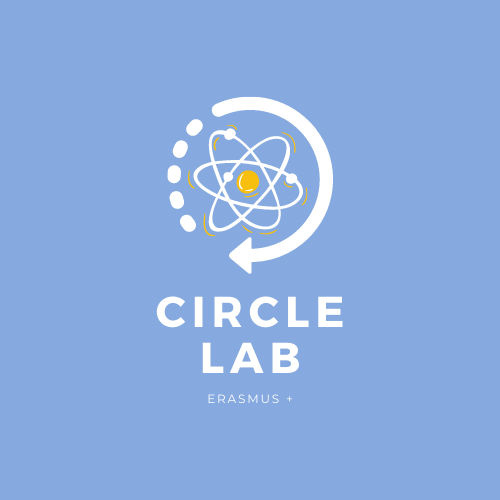Project title: Innovative learning approach for circular chemistry in secondary education
Project Acronym: Circle- lab
Project start date: 01.09.2020
Duration: 36 months
Project end date: 31.06.2023
Project number: 2020-1-SE01-KA201-077967
Coordinator of the project
MAELARDALENS HOEGSKOLA – Sweden
Partner Organizations
- Consorzio Scuola Comunità Impresa – Italy
- Eco Logic – The Republic of North Macedonia
- Rudbeckianska gymnasiet – Sweden
- SC Sviluppo chimica S.p.A. – Italy
- Non-formal learning club “WE” – Lithuania
- SOU ,,Orde Chopela” – The Republic of North Macedonia
- Kaunas Dainava Basic School – Lithuania
- Universidade da Coruna – Spain
Context/Background
According to reports, circular economy could help boost EU GDP by EUR 1.8 trillion by 2030, result in over 1 million new jobs across the EU by 2030, and be central to cutting greenhouse gas emissions (Ellen MacArthur et al. 2015) and the chemical industry could be at the forefront of this transition by offering innovative solution for a better use of the materials and energy sources. (CEFIC; 2019) However a few challenges are preventing a smooth shift to circular economy, in particular:
- Lack of awareness about circular economy benefits at social, environmental and business level.
- Lack of specialized training and education promoting skills necessary to fit in the circular economy model
- Lack of national policies promoting ESD principles through a multi-sectorial approach
- Lack of interest in Science and Technology subjects and related career among European students and young people
Objectives
CIRCLE-LAB, in line with the European lifelong learning approach, is aimed at supporting the initial and continuous professional development of teachers’ profiles through the application of practical and innovative tools in order to promote circular chemistry in secondary schools.
The project will consider identified needs and gaps related to circular chemistry education and in particular:
- need for a practice-based approach that provides innovative resources and tools
- lack of a promotion of circular economy principles and ESD core competencies within chemistry education
- necessity of promoting and developing digital learning environment
Activities and Methodology
OUTPUT 1. CIRCLE-LAB Modules This output aims at defining a specific educational framework for the teaching of circular chemistry for secondary school students.
OUTPUT 2. CIRCLE-LAB training programme This output consists in the development of a training curriculum designed for secondary school teachers, aimed at consolidating teaching professions from Initial Teacher Education
(ITE) to Continuing Professional Development (CPD).
OUTPUT 3. CIRCLE-LAB Toolkit The objective of this output is the design and development of the Toolkit for educating secondary school students on circular chemistry
OUTPUT 4. CIRCLE-LAB online environment The CIRCLE-LAB online environment will consist of two key components:
1. The MOOC: the online course for teachers (IO2) offered as a MOOC in order to allow large number of users and to facilitate its transferability and further exploitation.
2. The Structured Toolkit: It will contain the Toolkit and related guidelines developed in IO3, organized online in a way that it promotes the tools’ association with the CIRCLE-LAB training programme and their interdependence.
Results and impact
The desired impact at local and regional level is that the CIRCLE-LAB may become a reference in developing skills for circular chemistry and achieve the highest adhesion and participation by the individuals and organisations involved in each partner’s network, in order to offer services and support to learning activities about circular chemistry.
At national level, the desired impact is to involve potential schools and teachers in the field of circular chemistry that can be multiplier actors and contribute to the use of Project results.
At European level, the project will enforce the promotion of circular chemistry and ESD principles and its added value on the environment as well as on the social and economic level.





